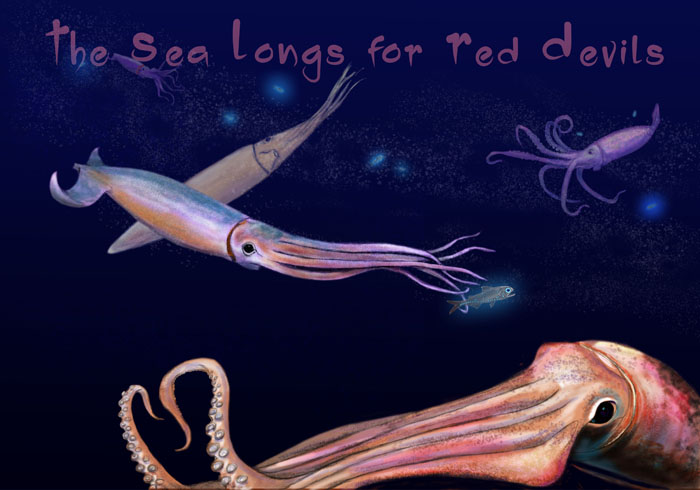
|
| Illustration: Rena Ekmanis |
The elusive Humboldt squid has abandoned a Mexican fishery in need. Daniela Hernandez dives into a giant marine mystery. Illustrated by Rena Ekmanis. |
 |
William Gilly has seen a Kraken. The mythical squid beast with ship-dooming tentacles surely exists, Gilly says, because he’s seen a baby one. “It was this big around,” he says, making a circle as big as a tire with his arms, a proud, boyish smile on his face. Fishermen spotted the carcass of the 8-foot-long, 400-pound baby giant squid in Monterey Bay three years ago. “If you’re an assistant professor proposing to study it, I don’t think you’d get tenure,” Gilly says. “But one has to exist.”
Gilly’s laboratory at Stanford University’s Hopkins Marine Station in Pacific Grove brims with squid décor: stuffed animals, preserved specimens, glass figurines, drawings, photographs, plastic toys, and piñatas. He has studied these denizens of the sea for almost four decades, and he’s handled countless numbers of the fabled Kraken’s smaller cousins, the very real jumbo Humboldt squid. Like their giant counterparts, Humboldt squid are enigmatic. No one has seen them mate or lay eggs. No one has watched them develop from egg to adult. No one knows how many exist.
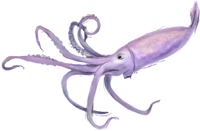 These tentacled titans have now ensnared marine biologists with another riddle: They have left their normal gathering grounds in the Sea of Cortez in Baja California, Mexico. Fishermen worry that a critical part of their livelihood may be gone. Many families have depended on Humboldt squid since the slippery creatures moved in droves into the Gulf of California’s Guaymas Basin in the 1970s. These tentacled titans have now ensnared marine biologists with another riddle: They have left their normal gathering grounds in the Sea of Cortez in Baja California, Mexico. Fishermen worry that a critical part of their livelihood may be gone. Many families have depended on Humboldt squid since the slippery creatures moved in droves into the Gulf of California’s Guaymas Basin in the 1970s.
“We have a huge problem on our hands,” says coordinator Juan Pedro Vela Arreola of the Alianza de Ribereños y Armadores, an association of fishermen and producers in Mexico. “Fishermen are desperate.”
Gilly blames the most recent El Niño in the Pacific Ocean for forcing some Humboldt squid to migrate away. Others have physically shrunk—just one bizarre adaptation among their many strange body-shifting behaviors. Leaders of Mexican fisheries and scientists are banding together to figure out whether the diablos rojos—“red devils”—will come back, and how to cope in the meantime.
“You have to learn to live in a very unpredictable way,” says marine biologist Unai Markaida of El Colegio de la Frontera Sur (ECOSUR) in Campeche, Mexico. “You live like a squid, and you adapt to the life it leads.”
Seeking cephalopods
“They’re very mysterious,” says marine biologist Danna Staaf, stressing very in a slightly higher pitch. “And so weird.”
Staaf, a self-described “cephalopodiatrist,” completed her Ph.D. with Gilly’s team. She studied Humboldt squid on two summer research cruises in the Gulf of California before the latest El Niño drove them away. She and her crewmates pulled up to 15 squid out of the water every night, when they would come up to the surface from depths of more than 3,200 feet to feed. Many of the 20-pound cephalopods she caught were about four feet long. Most were one year old. Scientists can tell their age by looking at the number of rings on tiny crystals located near their brain called statoliths, like botanists can age a tree by counting its rings. These stones help a squid detect gravity and maintain their balance and sense of space.
The scientists stored some of the catch in their “squid condo,” an oversize cooler with continuously flowing water and six clear, plastic tubes about the size of paper-towel rolls. They housed squid in separate tubes to keep them from attacking one another. Over the next few days, they studied the squids’ behaviors and neurophysiology. For instance, altering the temperature and oxygen content of the water could trigger or change their escape response—the way squid dart away when startled by a predator.
Staaf dissected other squid to study their development, the focus of her dissertation. She used their eggs and sperm to make squid babies. She wanted to discover the temperature range at which their eggs could hatch and develop. At the time, Humboldt squid had spread to waters off the coast of Monterey. Marine scientists thought the squid might establish new colonies there, but Staaf wanted to know whether it was even possible for the animals to grow in the much cooler waters of California’s Pacific coast. In the lab, she found, their eggs can grow between temperatures of 60 and 77 degrees Fahrenheit. (Now, that question has been supplanted by when Humboldts will return: There haven’t been squid in Monterey Bay for about two years.) Whether squid babies have the same preferences in the wild is still unknown, Staaf says.
Other team members studied squid chromatophores, structures in their muscles that allow them to change color. Humboldts sometimes flash from red to white as they propel themselves through dark waters. Scientists don’t know how they control these color shifts, whether it’s the brain or local nerve cells that set off the flickering. They also don’t fully understand why they suddenly change colors, but some speculate it’s a form of communication.
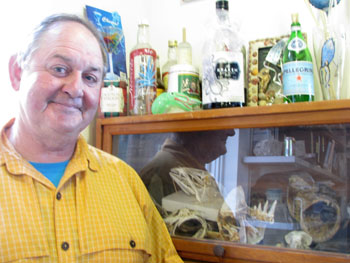 Photo: Daniela Hernandez
Photo: Daniela Hernandez |
Stanford University marine biologist William Gilly with his squid paraphernalia at Hopkins Marine Station. (Click on photo to see larger version.) |
|
|
When they’re not in direct contact with other squid, their flesh flickers from red to white in a random, mosaic-like pattern. Gilly compares this to visual white noise. But as they interact with their species, the irregular color waves become more organized, like a cephalopod Morse code, Gilly says. They can change the intensity of the flashing, as well as the rhythm and frequency. Squid might use these “calls,” together with arm posturing, to attract mates or to establish hierarchies, for example.
Gilly and his team have seen some of these behaviors through underwater “Crittercams,” about the size of 12-ounce soda bottles, attached to a squid’s back. “Ideally, we’d also like to see what they eat,” Gilly says, because that might help his team study these animals. Scientists can’t get Humboldts to eat in the lab, so squid last only a few days in captivity.
Indeed, squid dislike being trapped, strongly. Sometimes they get so anxious, they ram themselves against the tank. “They’ve never seen the bottom. They’ve certainly never seen the wall of a tank,” Gilly says. “They’re intelligent organisms. And when you put one in an abnormal situation, they get totally freaked out. They don’t do their flickering in the lab,” he notes.
Scientists do know that during the day, Humboldt squid forage for silvery lanternfishes and other small animals in the oxygen minimum zone, a dark, cold netherworld more than 3,000 feet deep. Here, oxygen is scarce, and while few animals can withstand its hostile environment, Humboldts seem to thrive. “Living in low oxygen—that’s surprising, especially for an animal that’s an athlete,” Markaida says. How they move and how their nervous system functions under these conditions is still a mystery.
Widespread changes in the temperatures of Earth’s oceans have compelled many creatures, including the powerful Humboldt squid, to seek new climes. Their dominion usually stretches from Argentina to California, but more recently they’ve been spotted in Canada and Alaska. Scientists don't yet understand how the squid are settling into their new hangouts.
Puzzling patterns
Gilly and his crew regularly catch Humboldts between three and five feet long. But since 2010, the larger ones—and the commercially important ones—have gone missing from the Guaymas Basin, a deep underwater valley in the central Gulf of California.
Some squid have migrated north of the gulf’s Midriff Islands, while others aren't growing as large to better their chances of surviving the nutrient-deprived waters spawned by the El Niño pattern of warm currents. Gilly doesn’t know why and how the squid develop these strategies or how long it will take them to recover. But he’s seen it happen before.
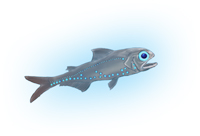 In 1998—the last time El Niño hit—he witnessed similar trends. That year, there weren’t many squid either, and the fishery in the Gulf of California collapsed. Typically, cool nutrient-rich water circulates from about 200 feet to the top of the ocean. A strong El Niño raises surface temperatures by about 5 degrees Fahrenheit, sending this cool water deeper than usual. The water that does cycle upward is warm and lacks its usual nutrients. In this altered setting, marine phytoplankton—the algae at the bottom of the sea’s food chain—collapse. That affects the entire ecosystem, including Humboldt squid, their prey, and species that feed on them, like sharks and sperm whales. In 1998—the last time El Niño hit—he witnessed similar trends. That year, there weren’t many squid either, and the fishery in the Gulf of California collapsed. Typically, cool nutrient-rich water circulates from about 200 feet to the top of the ocean. A strong El Niño raises surface temperatures by about 5 degrees Fahrenheit, sending this cool water deeper than usual. The water that does cycle upward is warm and lacks its usual nutrients. In this altered setting, marine phytoplankton—the algae at the bottom of the sea’s food chain—collapse. That affects the entire ecosystem, including Humboldt squid, their prey, and species that feed on them, like sharks and sperm whales.
A year after the 1998 El Niño, a new generation of squid came back to Guaymas, but many were quite small. They may not grow because there’s not enough krill and lanternfishes to eat as they’re developing, Gilly says. Two years later, as the effects of El Niño subsided, fishermen and researchers started to see large Humboldts again.
“In 1998 and 1999, our mentality was, ‘We didn’t get any squid, ni modo (too bad),’” says Vela Arreola. Shrimping and other fisheries were booming, and fishermen could forego catching squid. But the ecosystem was very different then. Today, fishers are emerging from another bad season, and they have no money. Few other fisheries in the area are productive, either. Says Vela Arreola: “Now, we are very worried.”
 The people in Guaymas and Santa Rosalia, two towns near the Gulf of California, have scheduled part of their lives around the squids’ behavior. In late fall through early spring, Guaymas fishers went out on their pangas, or small boats, looking for Humboldts. In late spring, the red devils swam west toward Santa Rosalia. That migratory pattern had been stable for at least 10 years. “It was like a timetable,” Gilly said. “In 2010, that all changed.” The people in Guaymas and Santa Rosalia, two towns near the Gulf of California, have scheduled part of their lives around the squids’ behavior. In late fall through early spring, Guaymas fishers went out on their pangas, or small boats, looking for Humboldts. In late spring, the red devils swam west toward Santa Rosalia. That migratory pattern had been stable for at least 10 years. “It was like a timetable,” Gilly said. “In 2010, that all changed.”
Today’s Humboldt populations in the Gulf of California are still recovering from the 2010 El Niño, but they’re adapting slowly. Their survival strategies are similar to the ones they used more than a decade ago. The larger ones appear to have migrated about 100 miles north to Salsipuedes, a narrow turbulent strait whose waters are untouched by El Niño because of the area’s geography. A wall comes up in the middle of the gulf and acts as a barrier, separating this area from the much wider Guaymas Basin to the south. This creates tidal upwelling that circulates cold nutrient-rich water to the surface.
“It’s like a washing machine. If you’re in that area, you can see boils coming up. It’s incredibly rich,” Gilly said. “And the productivity is buffered from El Niño because it’s not wind-driven upwelling like in the rest of the coast.” As a result, the food supply is more stable.
Other squid have stayed put in the Guaymas basin, staying small instead of moving north. Unlike the diminutive squid Markaida observed here in 1998, these squid are mature and spawning. Males are full of spermatophores: white, needle-like sperm packets. Females are bursting with ripe orange eggs, signs of sexual maturity. But these are only six months old and weigh about a pound, Gilly says. Humboldt squid in the Gulf of California aren’t sexually mature until they’re about a year old, when they weigh 10 to 20 times as much. The biggest Gilly ever saw was about 80 pounds.
Gilly compares this highly unusual strategy to a human reaching puberty at a body weight of 10 to 15 pounds. “If you’re a squid and you don’t sense the right thermal gradient, then there might be some set of genes that get turned on that tells you to reproduce early because an El Niño is coming,” he says.
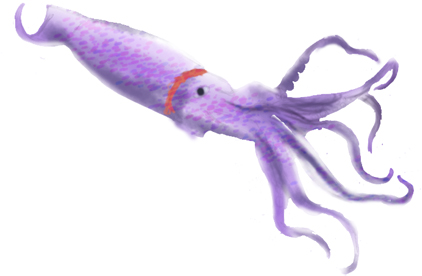 In summer 2011, the squid Gilly and his team caught were larger than in 2010, but still small by normal standards. Humboldts only live for about one year, so Gilly thinks more than food supply and water temperatures may be at play. Epigenetics—modifications that affect the way genes are expressed—could affect size and reproduction across generations, he speculates. In summer 2011, the squid Gilly and his team caught were larger than in 2010, but still small by normal standards. Humboldts only live for about one year, so Gilly thinks more than food supply and water temperatures may be at play. Epigenetics—modifications that affect the way genes are expressed—could affect size and reproduction across generations, he speculates.
Depending on how the squid adjust, Gilly thinks these animals could establish two distinct populations in the Gulf of California. Large squid may settle in Salsipuedes and small squid may spread across the entire region, eventually getting larger again. “There’s some kind of multi-generational increase in size,” he says. “They don’t switch back to the giant size immediately, even though they can switch from giant to being small” in one generation. Gilly has no genetic data to back up this hypothesis, but he wants to do that analysis.
In the meantime, fishermen are taking a financial hit. Small squid are harder to catch, and fishermen must catch more to make the same amount of money. At two pesos (16 cents) a pound, every squid counts. Some fishers have even hauled their pangas from Santa Rosalia to Guerrero Negro on the Pacific coast, 140 miles west, after hearing rumors Humboldts had been sighted there. Others have taken the journey north toward the Midriff Islands, just like the squid. But even that is not enough, and fishermen only get two or three days of work, Vela Arreola says.
In January 2012, Vela Arreola and his colleagues petitioned the government to declare the first state of emergency for squid fisheries, similar to what’s done for farmers during severe droughts. Fishers have dealt with a “squid drought” for three years, Vela Arreola says, without any form of federal aid. The government has not yet responded.
Tentative tentacles
While squid learn to cope, fishers in Guaymas and Santa Rosalia must come up with a contingency plan of their own. In June 2011, community leaders from the Alianza de Ribereños y Armadores teamed up with Gilly and other research institutions and private foundations throughout Mexico to increase studies of Humboldt squid in the gulf. Fishermen and their leaders want to understand the squids’ biology, how many there are, why they’re moving, and what they can do to ensure the fishery thrives again.
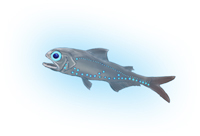 “They’re helping us come up with a comprehensive management program for the Humboldt squid in the Pacific. How the international community is dealing with this problem is important,” Gilly says. “They’re helping us come up with a comprehensive management program for the Humboldt squid in the Pacific. How the international community is dealing with this problem is important,” Gilly says.
Many researchers are interested in the squids' eating, mating, and swimming behaviors, but Vela Arreola thinks it’s imperative to understand their panorama completo: their whole environment and their interactions with other species. “Squid could be a great savior for some people or a great curse for others,” he says. Ripple effects, both social and economic, are inevitable when a dominant species moves around. “The Humboldt squid is an opportunist,” Markaida says.
The Mexican fisheries haven’t yet volunteered to fund scientific research on the squids’ patterns of behavior, Gilly says. About five years ago, the Mexican government, together with the World Wildlife Fund, drafted a squid management plan. “But to my knowledge, nothing is happening with the management plan in Mexico,” he says. “In that sense, it’s the same old thing that everybody wants something done, but nobody wants to pay. Scientists don’t want to do it for free because they don’t have money to pay for it, either.”
For now, he’s concentrating on establishing a laboratory in Santa Rosalia, where he hopes to spend more time studying Humboldt squid and training local students. “I have this fantasy that if we have a lab, everything will work better and more easily. We could have programs with students, both from here and from other places in Mexico, to work with the fishing community,” Gilly says. There’s also interest from commercial companies to use the squid remains to make food pellets for aquaculture, pharmaceuticals, and supplements of omega-3 fatty acids. “We’re talking about a lot of squid. They bring about 50 to 60 thousand tons a year, and they’re throwing an equal amount overboard,” Gilly says.
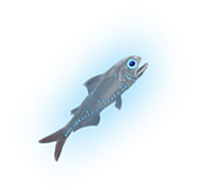 These efforts could capitalize on squid resources that do remain in Mexico, encouraging more local contact with the animals. Although Humboldt squid is starting to show up on menus around Mexico, most of the catch is packaged and sent to Asia. “If you catch it and sell it for almost nothing, it doesn’t really mean a whole lot,” Gilly says. “But if it’s something that’s good for human health or good for raising shrimp or other things they could relate to, it could make a more cohesive community.” It could also create jobs, better education, and make local economies more stable. These efforts could capitalize on squid resources that do remain in Mexico, encouraging more local contact with the animals. Although Humboldt squid is starting to show up on menus around Mexico, most of the catch is packaged and sent to Asia. “If you catch it and sell it for almost nothing, it doesn’t really mean a whole lot,” Gilly says. “But if it’s something that’s good for human health or good for raising shrimp or other things they could relate to, it could make a more cohesive community.” It could also create jobs, better education, and make local economies more stable.
That’s an important goal, says Markaida, because “even if you behave, that doesn’t guarantee there’ll be squid.” Having other sources of income through education, technical training, and building new industries might make the citizens of Santa Rosalia and Guaymas less vulnerable to the whims of squid. For now, Humboldts may take their time in returning, flashing in the depths, oblivious to the turmoil they’ve caused by leaving behind the men and women who had come to depend on them.
Story ©2012 by Daniela Hernandez. For reproduction requests, contact the Science Communication Program office.
Top
Biographies
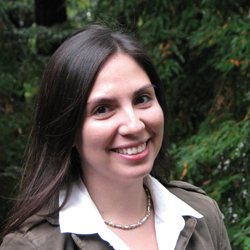 Daniela F. Hernandez Daniela F. Hernandez
B.A. (biology) Amherst College
Ph.D. (neurobiology and behavior) Columbia University
Internship: Minneapolis Star Tribune (Kaiser Family Foundation health reporting internship)
I've always had a sweet spot for food. So do autophagic vacuoles, the sack-like organelles I studied in graduate school. These tiny cannibals like to chow down on proteins in their parent cells. I found that they also may regulate how our brain's neurons communicate with each other—a process that breaks down in degenerative diseases, like Parkinson's.
When I graduated, I decided to leave the vacuoles behind and do some communicating of my own. My penchant for writing science stories told me I was better at typing words than genotyping.
I spent the summer at the Los Angeles Times reporting about astronomy, neuroscience, transplant surgeries, paleontology, and, yes, food. The science intrigued me, but what fascinated me were the human stories behind the experiments. Those are the angles I want to reveal, to the people whose lives they affect.
. . . . . . . . . . . . . . . . . . . . . . . . . . . . . . . . . . . . . . . . . . . . . . . . . . .
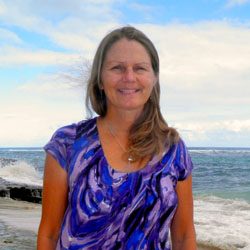 Rena Ekmanis Rena Ekmanis
B.F.A. (drawing) California College of the Arts, Oakland
Internship: National Oceanic and Atmospheric Administration
Drawing and painting have been passions of mine since childhood. I have always been fascinated with the flora and fauna of my surroundings and have spent a lot of time exploring nature and the wilderness. I am fortunate to have lived in some very beautiful places including coastal Northern California, Hawaii and New Zealand, where I found many fascinating subjects to study and paint.
I am grateful for this opportunity to expand my skills in science illustration. My main interest is in illustrating marine life and marine ecosystems, and I scuba dive and snorkel whenever possible. I will return to Hawaii for an internship with NOAA in July 2012. Please see more of my illustrations and artwork at my website.
Top
|

